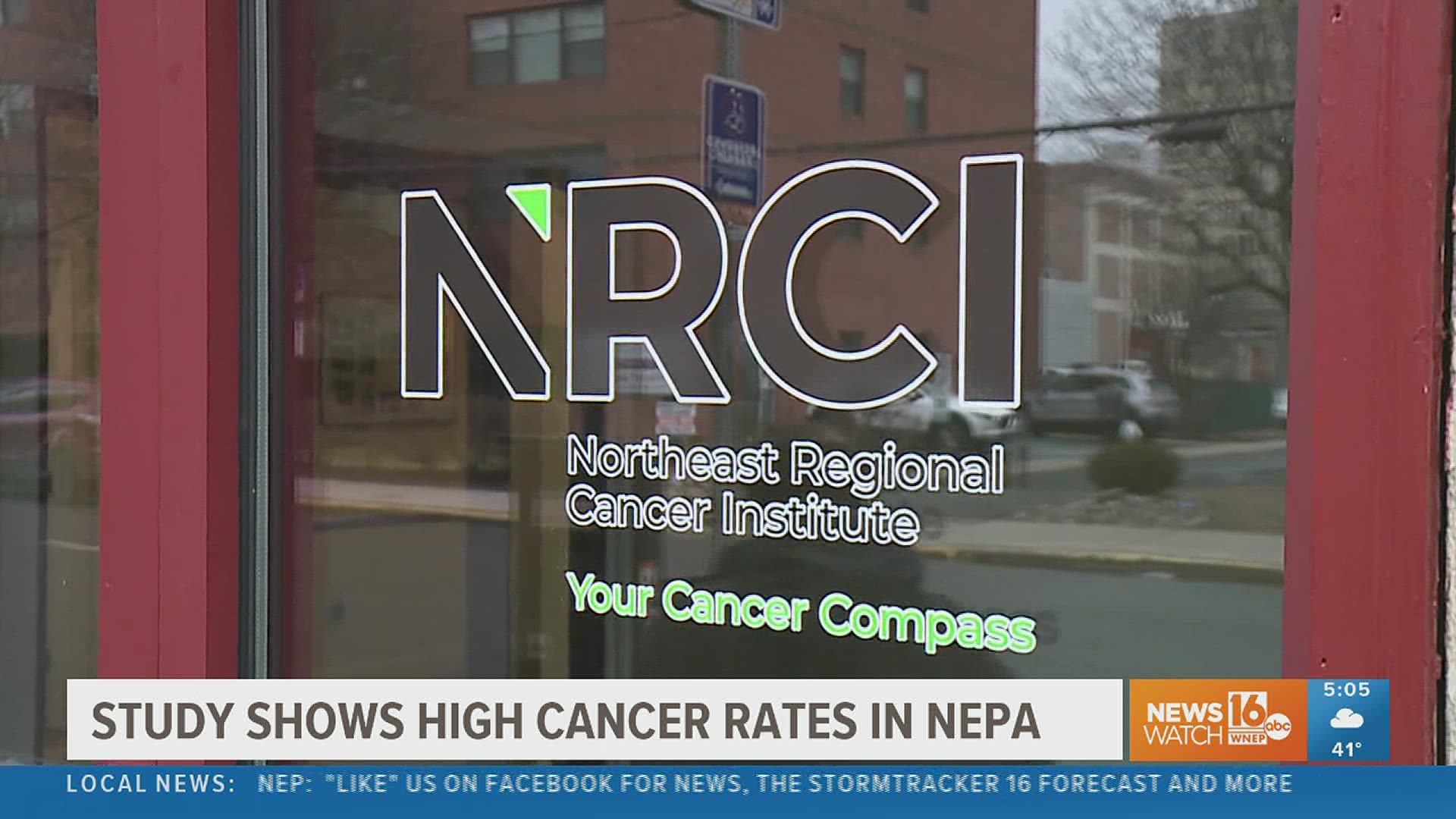SCRANTON, Pa. — A five-year study conducted by the Northeast Regional Cancer Institute (NRCI) shows that our area has a higher rate of cancer compared to the rest of the country
Every year, the NRCI compares the cancer landscape of our area to that of the U.S. as a whole.
"What we find each year actually is that we do have more cancer incidence or new cancer cases relative to the U.S. here in northeastern Pennsylvania, and the same for mortality. so, we're seeing elevated rates here in our area," said Karen Ryczak, RN, NCRI director of navigation and surveillance programs.
That includes higher rates of the 23 most common types of tissue cancers.
Ryczak says the most common is lung cancer.
"About 28 percent higher here," Ryczak said. "Cervical cancer is also higher here. Prostate cancer and breast cancer are not but we still have a lot of breast and prostate cancer."
"The second cause of lung cancer is radon exposure, and we also know that here in northeastern Pennsylvania, also the northeast part of the country, actually we do have higher pockets of radon," added Ryczak. "So, that's something else individuals can do to reduce their risk is have their house tested for radon exposure and remediate if there is a high level."
So why does our area trend higher in cancer cases? While some might look to water or air quality, officials at the NRCI say lifestyle choices are the main driver.
"For example, smoking increases the incidence of many cancers, obviously lung but also other cancers such as head, neck, bladder, colon, breast. Also, alcohol consumption, increased alcohol consumption can also increase your risk for many cancers."
Ryczak says making healthy lifestyle decisions are the only thing we can control that can help curb our risk.
"But there are things that we can't control — age, gender, family history, genetics all affect our risk of getting cancer," Ryczak explained. "We really have to focus on those lifestyle choices that we can change as individuals."
Now, even though our area trends are older than other places in the U.S., this study did account for things like age and race in the research, so that did not have any swaying in these results.
What folks at the NRCI recommend you do to lower your risk in addition to making healthy lifestyle choices is to get screened, and they can help with that even if there are insurance or cost barriers in the way for you.
If you are interested in any type of prevention resources, whether it be a screening, warning signs, or a list of doctors, NRCI has a lot of resources available They can be found here.
See more health-related stories on WNEP's Youtube page.


